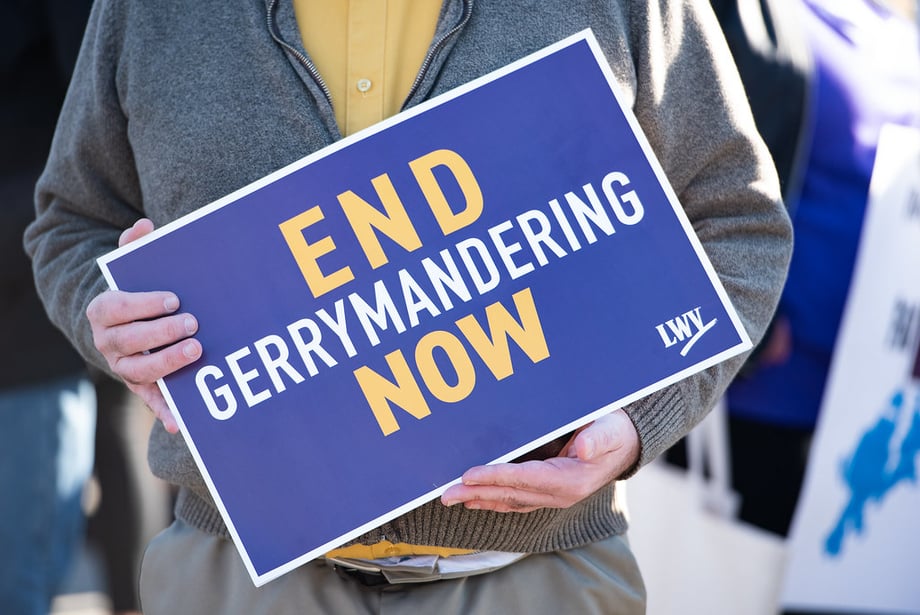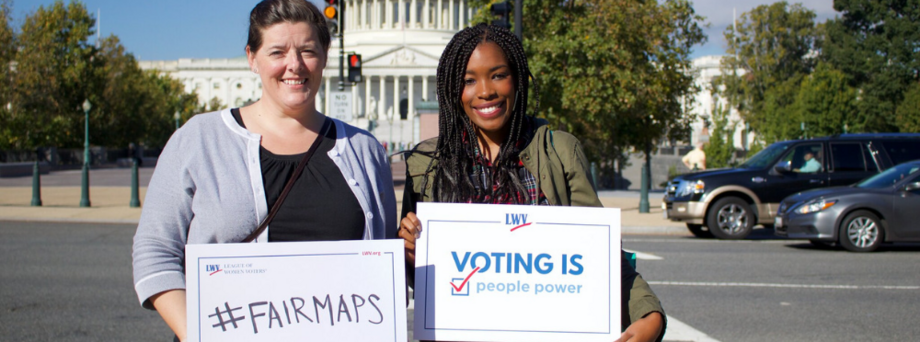Since the first decennial census in 1790, the United States has redrawn political districts every 10 years based on population counts. This rhythm has been a cornerstone of representative government, offering stability, predictability, trust, and a measure of fairness.
Let’s be honest: We’re only talking about mid-cycle redistricting now because politicians fear losing power. And they’re willing to rewrite the rules to keep it.
,
Stay Updated
Keep up with the League. Receive emails to your inbox!
,
It began in Texas, where unusual pressure from the president spurred Republican legislators to push a redistricting plan five years before the next census. The stated rationale isn’t population change or fairness, but pure political calculus. Using a special session, Texas lawmakers want to rush through maps that entrench power and limit voter choice. Instead of earning votes through policies that help Americans, they’re manipulating the maps to tilt elections before voters even get to the ballot box.
While it began in Texas and spread to other Republican-led states, several Democratic governors are now preparing to counter by drawing new maps of their own. This dangerous tit-for-tat turns redistricting into a partisan arms race. The losers are the voters, regardless of party.
,

,
Reports indicate the White House and Justice Department are also urging state officials, applying political pressure to shape district boundaries. In a healthy democracy, map-drawing is guided by transparency, fairness, and the will of the people — not by the heavy hand of those in power.
This is no minor skirmish. The House of Representatives controls investigations into election security, government accountability, and policies that affect millions — from access to health care to immigration enforcement. And this is not business as usual. Mid-cycle map manipulation is a high-stakes strategy to lock in control and shield those in power from voter accountability.
If the political class can silence minority communities today, they can silence yours tomorrow.
,
,
On the final day of its term, the US Supreme Court threw a curveball in Louisiana v. Callais, a case over whether to create a second majority-Black congressional district. After hearing arguments in March, the Court declined to rule, instead calling for new briefs on whether such a district violates the Constitution. This reframing shifts the case away from the Voting Rights Act (VRA) toward a constitutional question, potentially weakening or eliminating Section 2, one of the last federal protections against racially discriminatory voting laws.
That’s not judicial review. It’s an open door for racial gerrymandering to flourish under legal cover.
History tells us what’s at stake. As Chief Justice Earl Warren wrote: “Legislators represent people, not trees or acres. Legislators are elected by voters, not farms or cities or economic interests.” In Baker v. Carr (1962), the Court made redistricting reviewable by the judiciary. In Reynolds v. Sims (1964), it established “one person, one vote,” requiring districts to have roughly equal populations so every vote carries equal weight. Those rulings embedded fairness into the redistricting process and made clear that political power cannot be based on outdated data or partisan manipulation.
Scrapping that rhythm invites chaos.
,

,
And we know who will lose most: communities of color, young people, and new citizens whose voting power is already under strain.
Fair maps must be drawn with integrity, public participation, and strong legal safeguards. If states redraw maps to silence voters, the League of Women Voters will litigate to empower voters. We will also work alongside any pro-democracy leaders — regardless of party — who believe redistricting should empower the people.
But we cannot do it alone. Protecting fair representation will require sustained action from voters, advocates, and community leaders. Voters must stay vigilant and engaged at every stage of the redistricting process. First, attend public hearings in your state to make your voice heard. Next, submit written comments that call for maps to reflect the needs of your community. Finally, connect with neighbors, faith groups, civic organizations, and trusted local leaders to organize an observer corps that can respond quickly when proposed maps threaten fairness.
,
,
Equally important is supporting state and local efforts to pass strong redistricting reforms that mandate transparency, accountability, and public input. This includes advocating for and protecting independent commissions, having clear criteria that prohibits partisan gerrymandering, and ensuring the public has open access to all map-drawing data. Journalists and civic leaders can help by explaining what’s at stake in clear, relatable terms, sharing how district lines affect so much of our daily lives — like which schools get funded, which roads get repaired, and how health care gets delivered. By connecting redistricting to everyday issues and the balance of power in government, the media can empower people about why fair maps matter and why participation is essential.
Protecting fair representation is not a spectator sport. It is a collective responsibility that demands persistence, courage, and collaboration. When voters stand together, push for smart reforms, and refuse to be sidelined, we can secure maps that honor every voice and safeguard the foundations of our democracy.
America, it’s time to stay alert, organize, speak up, and defend democracy. It's time to rise.